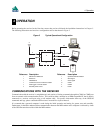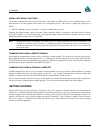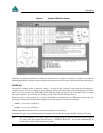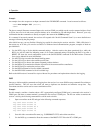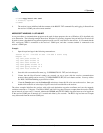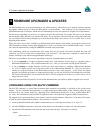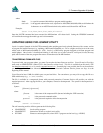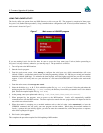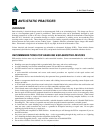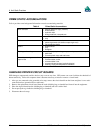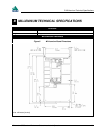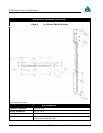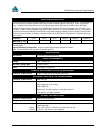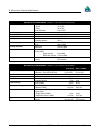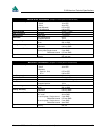
A Anti-Static Practices
MiLLennium GPSCard and Enclosures Guide to Installation & Operation 31
A ANTI-STATICPRACTICES
A ANTI-STATIC PRACTICES
OVERVIEW
Static electricity is electrical charge stored in an electromagnetic field or on an insulating body. This charge can flow as
soon as a low-impedance path to ground is established. Static-sensitive units can be permanently damaged by static
discharge potentials of as little as 40 volts. Charges carried by the human body, which can be thousands of times higher
than this 40 V threshold, can accumulate through as simple a mechanism as walking across non-conducting floor
coverings such as carpet or tile. These charges may be stored on clothing, especially when the ambient air is dry, through
friction between the body and/or various clothing layers. Synthetic materials accumulate higher charges than natural
fibers. Electrostatic voltage levels on insulators may be very high, in the order of thousands of volts.
Various electrical and electronic components are vulnerable to electrostatic discharge (ESD). These include discrete
components, hybrid devices, integrated circuits (ICs), and printed circuit boards (PCBs) assembled with these devices.
RECOMMENDATIONS FOR HANDLING ESD-SENSITIVE DEVICES
ESD-sensitive devices must only be handled in static-controlled locations. Some recommendations for such handling
practices follow:
•
Handling areas must be equipped with a grounded table, floor mats, and wrist or ankle straps.
•
A relative humidity level must be maintained between 20% and 80% non-condensing.
•
No ESD-sensitive board or component should be removed from its protective package, except in a static-controlled
location.
•
A static-controlled environment and correct static-control procedures are required at both repair stations and
maintenance areas.
•
ESD-sensitive devices must be handled only after personnel have grounded themselves via wrist or ankle straps and
mats.
•
Boards or components should never come in contact with clothing, because normal grounding cannot dissipate static
charges on fabrics.
•
A circuit board must be placed into an anti-static plastic clamshell before being removed from the work location and
must remain in the clamshell until it arrives at a static-controlled repair/test center.
•
Circuit boards must not be changed or moved needlessly. Handles or finger holes may be provided on circuit boards
for use in their removal and replacement; care should be taken to avoid contact with the connectors and components.
•
On-site repair of ESD-sensitive equipment should not be undertaken except to restore service in an emergency where
spare boards are not available. Under these circumstances repair station techniques must be observed. Under normal
circumstances a faulty or suspect circuit board must be sent to a repair center having complete facilities, or to the
manufacturer for exchange or repair.
• Where protective measures have not been installed, a suitable alternative would be the use of a Portable Field Service
Grounding Kit. This consists of a portable mat and wrist strap which must be attached to a suitable ground.
• A circuit board in a static-shielding bag or clamshell may be shipped or stored in a cardboard carton, but the carton
must not enter a static-controlled area such as a grounded or dissipative bench top or repair zone. Do not place
anything else inside the bag (e.g. repair tags).
• Treat all PCBs and components as ESD sensitive. Assume that you will damage the PCB or component if you are
not ESD conscious.
• Do not use torn or punctured static-shielding bags. A wire tag protruding through the bag could act as a “lightning
rod”, funneling the entire charge into the components inside the bag.
• Do not allow chargeable plastics , such as binders, within 0.6 m of unshielded PCBs.
• Do not allow a PCB to come within 0.3 m of a computer monitor.



